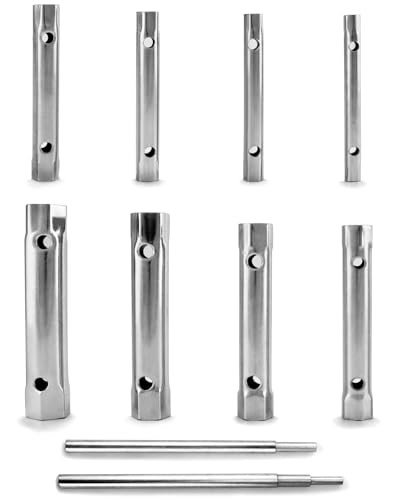sTeeve
Well-known member
I just purchased a JESLA http://shop.quickchargepower.com/JESLA-is-THE-40-amp-J1772-portable-charging-solution-JESLA.htm
It comes with these adapters that make it unique in that it can plug-in to almost any power source.
So I've been playing with it this afternoon. It works great plugged-in to my 240V/50A service in my garage (NEMA 14-50). Spark EV draws 13.4 A, topping out just shy of 3 kW, according to Torque Pro. Not bad (well, really, not so great unless you're not in a hurry, but then that's what DCFCs are for, eh?).
Plugged-in to 120V/15A service. Car starts drawing 8 A. Hmmm. Car is off, so I fire it up, go to the "Energy" screen, change the Amps to 12, car starts drawing 11.8 A. Much better.
So, what I've discovered is that the car's onboard ability to modulate the charging current isn't restricted to the factory EVSE, at least not in the case of the JESLA.
I also noticed that the car seemed to retain the 12 A setting following a disconnect of the EVSE and off/on/off of the, um...well, it's not technically the ignition...power switch?
The JESLA is pretty damn cool (and pretty damn expensive). It tops out at 40 A and has no controls for modulating anything. Very much like Apple computers.
I'll be taking my Spark EV on a road trip at the end of Oct. Atlanta - Charleston, S.C. I'll be making at least 3, perhaps 4 stops at RV parks to charge + 2 DC fast charges, and prolly overnight charging at my hotel. The JESLA weighs a scant 8 lbs; my other semi-portable EVSE, a JuiceBox Pro, is a behemoth at 25 lbs. I had taken the JuiceBox Pro on a couple of road trips, and it works fabulously (took it to track day at Road Atlanta, where my i3 driving buddies wanted to try it out on their EVs). But it really belongs bolted to a garage wall.
-Bob K.
*Edit: Correction. The car does, indeed, change the amp setting back to 8A. A few hours after my tests, I checked the "Energy" screen, and the setting was back at 8A.
It comes with these adapters that make it unique in that it can plug-in to almost any power source.
So I've been playing with it this afternoon. It works great plugged-in to my 240V/50A service in my garage (NEMA 14-50). Spark EV draws 13.4 A, topping out just shy of 3 kW, according to Torque Pro. Not bad (well, really, not so great unless you're not in a hurry, but then that's what DCFCs are for, eh?).
Plugged-in to 120V/15A service. Car starts drawing 8 A. Hmmm. Car is off, so I fire it up, go to the "Energy" screen, change the Amps to 12, car starts drawing 11.8 A. Much better.
So, what I've discovered is that the car's onboard ability to modulate the charging current isn't restricted to the factory EVSE, at least not in the case of the JESLA.
I also noticed that the car seemed to retain the 12 A setting following a disconnect of the EVSE and off/on/off of the, um...well, it's not technically the ignition...power switch?
The JESLA is pretty damn cool (and pretty damn expensive). It tops out at 40 A and has no controls for modulating anything. Very much like Apple computers.
I'll be taking my Spark EV on a road trip at the end of Oct. Atlanta - Charleston, S.C. I'll be making at least 3, perhaps 4 stops at RV parks to charge + 2 DC fast charges, and prolly overnight charging at my hotel. The JESLA weighs a scant 8 lbs; my other semi-portable EVSE, a JuiceBox Pro, is a behemoth at 25 lbs. I had taken the JuiceBox Pro on a couple of road trips, and it works fabulously (took it to track day at Road Atlanta, where my i3 driving buddies wanted to try it out on their EVs). But it really belongs bolted to a garage wall.
-Bob K.
*Edit: Correction. The car does, indeed, change the amp setting back to 8A. A few hours after my tests, I checked the "Energy" screen, and the setting was back at 8A.












![4 Ports Fast Car Charger,[Upgrade Voltmeter Display] PD+QC3.0 Car Charger Adapter for 12-24V Cigarette Lighter Plug,Car Phone Charger Compatible with iPhone/Android/Samsung/iPad(QC3.0+PD+2.4A+2.4A)](https://m.media-amazon.com/images/I/41fxaOeWS4L._SL500_.jpg)











